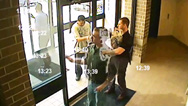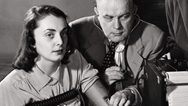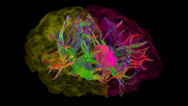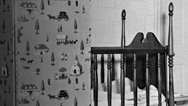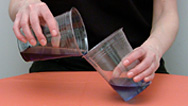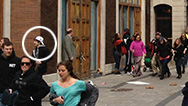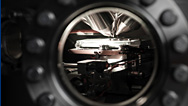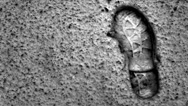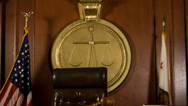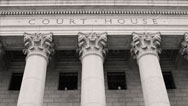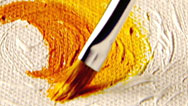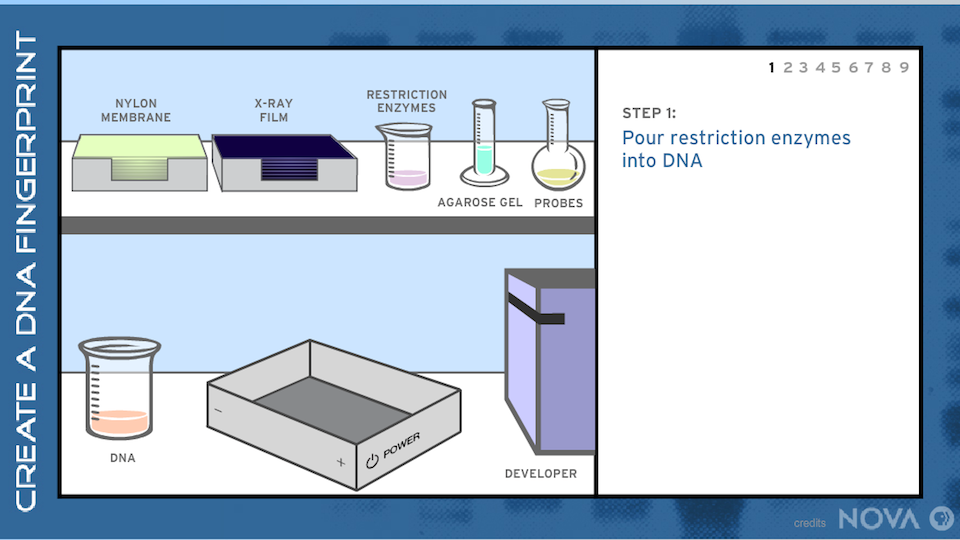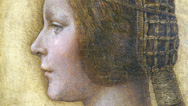
Forensics on Trial
Virtual autopsies, 3-D fingerprints, and digital crime scenes are making crime-solving into a more precise science. Airing October 17, 2012 at 9 pm on PBS Aired October 17, 2012 on PBS

Program Description
Transcript
Forensics on Trial
PBS Airdate: October 17, 2012
NARRATOR: There is a crisis in forensic science. The most trusted crime-fighting tools, responsible for hundreds of thousands of convictions, may not be as bulletproof as once thought.
JESSICA GABEL (Georgia State University): There's a laundry list of forensic techniques that are now scrutinized.
NARRATOR: Fingerprints may not be as unique as we thought.
ROBERT SHALER (Pennsylvania State University): Nobody's ever questioned fingerprints before.
NARRATOR: And decades-old techniques, like blood spatter analysis and bite-mark comparisons, are being exposed as more art than science. Killers are walking free, and innocent people are going to prison.
ROY BROWN: I don't belong here. I'm innocent.
NARRATOR: Can new technologies help put the "science" back in forensic science?
Now researchers and crime scene investigators venture into the not so distant future where avatar detectives enter murder scenes to witness the moment of death.
SOT: We can see the body on the floor.
NARRATOR: Forensic engineers make identifications from fingerprints of glass, and coroners conduct virtual autopsies, peeling back layers of 3D victims, exposing once undetectable evidence of murder.
Now, NOVA puts forensics under the microscope to see how good science can go bad and how to make getting away with murder a thing of the past. Right now, on NOVA, Forensics on Trial.
March 11, 2004, 7:30 a.m. rush hour: Ten bombs rip through Madrid's crowded commuter trains. One hundred ninety one people are killed, more than 1,800 wounded. It is the worst terror attack in Spain's history, and bears the hallmarks of Al Qaeda. The international manhunt that follows triggers a crisis in forensic science that will shake it to its very foundation.
Forensic techniques trusted by police for over a hundred years are shown to be dangerously flawed. Killers are walking free while innocent people are sent to prison and even death row.
The investigation to find the Madrid bomber sends shockwaves through the forensic community. And it all starts here, in a commuter parking lot, 10 stations away from where the bomb went off. Spanish police find a van; inside, is a blue plastic bag containing bomb-making materials. It could be a huge break. It's possible fingerprints have been left behind on the bag itself.
The idea that every person's fingerprint is unique has been a foundation of forensic investigation for over a hundred years, but this case poses a potential challenge. The lines and ridges that form the distinctive patterns of fingerprints left on evidence are created from sweat and oil. A print left on plastic, like the bag recovered in Madrid, can be easily wiped off or distorted.
Mark Acree is a former F.B.I. fingerprint analyst.
MARK ACREE (Independent Forensic Scientist): Plastic bags, by their very nature, are non-porous. The fingerprint is sitting on that surface, and it's very vulnerable to being smeared or smudged.
NARRATOR: But there are established ways to recover prints from non-porous surfaces. Evidence, ranging from gun handles to keys to plastic bags, are placed in an airtight chamber. Inside, a chemical called cyanoacrylate, more commonly known as superglue, is heated up. Its vapors coat the sweat and oil of the print with a sticky white residue, making the print visible.
But it does have limitations. Superglue chemically alters the lines of sweat and oil and can even obscure details of a print's unique pattern.
Using this method, Spanish investigators recover a partial print on the bag. They rush digital photos to forensic labs across the globe, including the F.B.I.
Examiners first need to determine if there are enough lines and details in the ridges for a clear comparison. Ridge details are broken down into distinctive shapes, like "dots," that look like islands; "endings," where ridgelines terminate; and intersecting lines called "bifurcations." From the Madrid bomber's print, the F.B.I. is able to zero in on seven unique traits for comparison.
Now, they look for a match.
MARK ACREE: They take the image, they encode it for fingerprint ridge detail, and then it's launched against this database.
NARRATOR: From over 47 million criminals, federal employees, military personnel and people of national security interest, the F.B.I.'s supercomputer identifies 20 prints that contain some of the same distinctive traits as the Madrid print.
Examiners require that 12 unique traits correspond, to declare a match. The F.B.I. identifies one of the 20 prints that actually shares 15 traits in common with the one found in Madrid.
It comes from the left index finger of this man: a 37-year-old, former U.S. army lieutenant and a convert to Islam, Brandon Mayfield. As a lawyer, now living in Portland, Oregon, Mayfield recently represented a convicted terrorist.
The F.B.I. sneaks into his home while he's at work, taps his phones, collects samples for D.N.A. and watches his wife and children.
On May 6, 2004, just two months after the bombing, the F.B.I. moves in.
BRANDON MAYFIELD: They pushed their way into my office. They took my hands and they handcuffed them behind my back. And, of course, I didn't know what they were searching and arresting me for. They never told me.
NARRATOR: This fingerprint match sparks the arrest of American Brandon Mayfield as the bomber responsible for the murder of nearly 200 people, Spain's 9/11.
Archival News SOT: …a fingerprint top counter-terrorism experts tell Newsweek Magazine in a quote, "absolutely incontrovertible match to Portland attorney Brandon Mayfield."
NARRATOR: Mayfield insists on his innocence. He hires his own fingerprint analyst to testify at a pre-trial hearing. The expert's testimony is not what Mayfield expects.
BRANDON MAYFIELD: He said, "It's a match." That's when I knew the train to a death penalty had just pulled out of the station.
NARRATOR: Federal agents take Mayfield back to jail to await trial. Hours later, half a world away, Spanish investigators make a stunning discovery that changes Brandon Mayfield's life.
BRANDON MAYFIELD: I was told that the Spanish police had found that this fingerprint belonged to an Algerian, that it wasn't me.
NARRATOR: Spanish police determine that the fingerprint belongs to this man: Ouhnane Daoud, a known terrorist.
Archival News SOT: Mayfield's release comes after news from Spain. A fingerprint found on a bag linked to the Madrid train attacks belongs to an Algerian national, not Brandon Mayfield.
NARRATOR: Mayfield is released from jail after 15 days. Now, the question on everyone's mind is, "How could this misidentification happen?" It's a question that will eventually make its way to the United States Congress.
The similarity between Mayfield's print and the bomber's is undeniable. It challenges a century-old pillar of forensic science: that no two prints are identical.
MARK ACREE: We always assumed that fingerprints are unique. But what the Mayfield case demonstrates is that parts of a fingerprint can be so similar, it's possible for two different people to be identified to one latent print.
NARRATOR: The U.S. Congress calls on the National Academy of Sciences, the nation's most prestigious research institution, to conduct an investigation into all forensic technologies and techniques. In July, 2009, they release their report. In short, they find there's not enough science in forensic science.
JESSICA GABEL: The big news was that forensic science was fractured.
NARRATOR: Jessica Gabel is a professor of law and frequently lectures on the N.A.S. findings.
JESSICA GABEL: It lacks the rigors, the standards, the quality controls and procedures that we find, usually, in science. And in that light, forensic science, actually, can sometimes contribute to wrongful convictions.
NARRATOR: The Madrid bomber case is a perfect storm of forensic flaws. Only a partial print is recovered on a plastic surface, and that is, eventually, distorted. There is also a surprising similarity between parts of Mayfield's print and the real bomber's. Together these could have led to the conviction of an innocent man. Can modern science prevent this from happening again?
The answer is deceptively simple. Examiners need a way to expose more of fingerprints unique details.
Akhlesh Lakhtakia and his team at Penn State University's Materials Research Institute are eyeing a new technology that promises to do just that.
His project got wings from a fly. A fly's ability to elude capture fascinated Lakhtakia since he was a boy.
AKHLESH LAKHTAKIA (Pennsylvania State University): Before you can approach the fly, the fly has seen you, somehow or the other, and has flown off.
NARRATOR: Lakhtakia wonders if the structure of the fly's eye gives it a unique ability to see predators approaching from all angles. To find out, he turns to an ultrathin material called C.T.F., columnar thin film, to make an impression of the minutest contours of the fly's cornea.
Each square inch of the film contains billions of glass bristles. It forms a layer 200 times thinner than a sheet of paper.
When it coats the fly's eye, the bristles conform to every peak and valley. The result is that microscopic nooks and crannies show up in stunning three-dimensional detail.
The technology isn't helping Lakhtakia catch flies, but it does give him an idea for how to catch criminals. Could this technology be used to get the same incredible detail from a fingerprint?
AKHLESH LAKHTAKIA: This film would reproduce the topographic features, the geography, if you will, of ridges in the fingerprint.
NARRATOR: If C.T.F. can capture a fingerprint, it could revolutionize forensics. But will it work?
The team places a fingerprint on a glass slide. The slide is loaded into a chamber called a thermal evaporator. Inside the evaporator, the fingerprint is sprayed with a microscopically thin layer of vaporized glass. Unlike superglue, the glass does not chemically alter the oils that form the print.
After about 30 minutes, the glass bristles harden into an ultrathin film that preserves minute details. Even with the naked eye, the C.T.F. print reveals ridges that would be missing in a superglue print.
AKHLESH LAKHTAKIA: With the new technique, the ridges are far more prominent. You can see creases. Like, this is a crease, this is a crease, this is another crease.
NARRATOR: Under a microscope, there are exponentially more ridgelines.
With this technique, examiners in the Madrid bombing case could have had more points for comparison and a better chance to match the fingerprint to the real bomber. The C.T.F. fingerprint technique is currently being reviewed for use in the field.
But fingerprint analysis is not alone on the list of forensic disciplines currently under the microscope.
JESSICA GABEL: There's a laundry list of forensic techniques that are now scrutinized based on the N.A.S. report: bite-mark evidence, footwear impressions. There's no real science behind it as much as it's just trying to match patterns.
NARRATOR: And if that matching process goes bad, people's lives are changed forever.
May 23, 1991, 2:10 a.m.: In a rural community outside Syracuse, New York, police and firefighters rush to a blaze at a farmhouse.
COE ECKER (Retired Sheriff's Investigator): There was flames shooting up the front of the house; beautiful big two-story farmhouse.
NARRATOR: The occupant of the home, 49-year-old Sabina Kulakowski, is missing.
COE ECKER: I took one deputy, and we went up this laneway, worked our way up to about here. She was nude; just about totally covered with blood. She had been stabbed numerous times.
NARRATOR: A distinctive bruise catches his eye.
COE ECKER: We noticed a bite mark on the side of the body.
NARRATOR: But it gets worse. At the autopsy, Ecker sees bite marks on her breast, belly and back.
COE ECKER: We discovered that there was at least four more sets of bite marks.
NARRATOR: These marks could be the key to identifying Sabina's killer.
Dr. Lowell Levine is a leading expert on forensic dentistry.
LOWELL LEVINE (New York State Police Medicolegal Investigation Unit): The teeth cause a pattern injury in skin. The person will actually close their teeth down on some tissue, so a bite mark is really a bruise. And it's basically a bruise with patterning.
NARRATOR: Bite-mark forensics is based on the idea that everyone's teeth create distinctive patterns. To find a match, forensic dentists, or odontologists, make a wax impression of a suspect's teeth. Then they try to match the pattern made by the size, shape and spacing of the teeth on the wax impression to a photo of the bruise on the skin of the victim.
LOWELL LEVINE: What we're basically doing is looking for similar characteristics in similar locations.
NARRATOR: In the murder of Sabina Kulakowski, it doesn't take long to find a suspect to compare for a match.
Investigators learn that six days before the murder, a hard-drinking 31-year-old is released from prison. His name is Roy Brown. After a Cayuga County, New York social service agency takes away his daughter, he threatens a massacre.
COE ECKER: What was said was, "What do you want? Do you want me to come down there and open up on you all with an Uzi?"
NARRATOR: Sabina Kulakowski worked at the Cayuga County social service agency.
Police interviews with Brown's ex-wives reveal a bombshell: when he gets mad, he bites. Brown denies involvement in the killing.
ROY BROWN: I gave them all kinds of samples, of tests, to show it's not me. I gave them all kinds of hair samples, saliva samples, blood samples, you name it.
NARRATOR: He allows authorities to take a wax impression of his teeth. It reveals a distinctive pattern. Brown is missing two teeth.
This leaves wide gaps in the wax impression. The bruise on the victim should have the same gaps that correspond to Brown's missing teeth but it only has a gap on the right side. It appears Brown's teeth don't match the evidence.
The forensic odontologist examines the bite pattern evidence. He thinks it shows that Brown bit down and, like a pit bull, twisted his mouth into the victim's skin, obscuring any gap on the left side. Based on his interpretation of the bite marks, he declares a match.
Police charge Brown with first-degree murder.
ROY BROWN: I said, "You're making a real serious mistake. It ain't my teeth, man." And they says, "Well, we got confidence in our dentist." And that was it.
NARRATOR: A jury finds Roy Brown guilty. He's sentenced to 25-years-to-life.
Brown spends the next 15 years in jail trying to prove his innocence.
ROY BROWN: I don't belong here, you know. I'm innocent. I turned my cell into an office, became my own attorney.
NARRATOR: Brown pours over every scrap of evidence. Eleven years into his sentence, he finds a clue. It's a statement taken from one of the firefighters on the night of the murder. The firefighter's name is Barry Bench. He's the former brother-in-law of the victim. They were fighting over her possession of his family's farmhouse.
Transcripts reveal that police questioned Bench on his whereabouts the night of the murder. Brown finds something suspicious in Bench's statement.
ROY BROWN:(Reading the statement) He says, "I left in my 1983 Datsun Century car and went to Jake's Tavern. I stayed there until 12:30 or 1:00."
NARRATOR: Bench states he then drove home, but to Brown, something doesn't add up.
ROY BROWN: He has to drive right by his family farm, the house that's in flames. You're going to tell me in the middle of the dark night, a gigantic ball of fire that big is just burning away and he doesn't notice it or stop or anything? And he's a fireman?
NARRATOR: Brown sends Bench a letter on December 24, 2003. He accuses Bench of murder.
ROY BROWN:(Reading his letter) Well, Christmas is tomorrow, and my gift to you is, mark my words, they will eventually find out of your guilt. Have a merry Christmas, but don't count on a happy new year.
And I sent it out to him. And I got a hell of a response.
NARRATOR: Five days later, Barry Bench lays down in front of an Amtrak train.
Police become suspicious and decide to compare Bench's D.N.A. to saliva recovered on the victim's t-shirt found at the crime scene. They match with almost 100 percent certainty.
Still, the judge believes that the bite mark evidence is strong enough to keep Brown in prison. There is only one way for Brown to prove his innocence: exhume Bench's body and compare his teeth to the marks left on the victim.
The case is assigned to Dr. Lowell Levine at the New York state forensic science unit, in Albany.
He faces two key questions: "Did Roy Brown do it?" And, "If not, who did?" First, Levine reviews the forensic evidence that convicted Roy Brown. He compares the bite marks on Sabina Kulakowski to the wax impression of Brown's teeth.
LOWELL LEVINE: I can positively tell you Roy Brown didn't cause the bite mark on the skin. There is no way that Roy Brown could have caused this area in here.
NARRATOR: While the right side of the bite mark has a space, the left side does not. The bite mark evidence used to convict Roy Brown was based on an implausible interpretation.
LOWELL LEVINE: It is impossible to get a marking if you don't have a tooth.
JESSICA GABEL: Forensic bite-mark evidence is more art than it is science. There is a lot of varied interpretation that goes into that.
NARRATOR: One thing is clear. Roy Brown did not murder Sabina Kulakowski. After 15 years in prison, 47-year-old Roy Brown is finally released. He sues the state of New York and wins $2.6 million.
What about Barry Bench? Levine examines the teeth from Barry Bench's disinterred jaw, but there's a problem. Trauma from the train injury and body decomposition from being buried limits Levine's ability to make a bite-mark analysis.
LOWELL LEVINE: By looking at what we were able to find on Mr. Bench, I can only tell you it's possible he could have caused the bite marks on Ms. Kulakowski.
NARRATOR: Barry Bench's badly deteriorated remains prevent Levine from making a more definitive match. The Sabina Kulakowski murder case is still open to this day.
So what if there were a way to perfectly preserve evidence, including bodies, and be able to access and examine them in a pristine state, no matter how much time passes?
In Sweden, that's already happening. The corpse inside this body bag may be the victim of a crime. It's what police suspect but have no way to prove.
That's the job of Dr. Anders Persson and his team. They are about to perform an autopsy. But this is no ordinary cut-open-the-cadaver job. In Sweden's Center for Medical Image Science and Visualization, this man is about to be sliced up in a virtual autopsy.
It begins inside this C.T. scanner. It's like an x-ray on steroids. Regular x-rays scan just the outline of bones, but C.T. scans use a rotating x-ray.
It takes 12 images per second, creating cross-sectional slices of bone, thinner than a dime. These image slices are stacked side by side, forming a stunning picture of a body's skeleton.
Dr. Persson's team also scans the body through an M.R.I. to search for evidence of damage to organs. M.R.I.s create a map of the body's tissue, slice by slice, using powerful magnets and pulsing radio waves.
The victim is never removed from the body bag. With the click of a mouse, the covering can be made invisible to get a virtual peek inside.
ANDERS YNNERMAN (Linköping University): What we're seeing here is the cadaver inside of the body bag. Here is the zipper. The whole body bag, which is made of plastic, we can't see now, because it's made completely transparent.
NARRATOR: The team merges the C.T. and M.R.I. data to produce a 3D model of the suspected murder victim. Now, the virtual autopsy begins.
ANDERS PERSSON (Linköping University): I can use a virtual knife and go into the body. We get rid of the soft tissue, and I look for small fractures in the skeletons and for small bleedings.
NARRATOR: Some of these fractures and other evidence are invisible to the naked eye. The most critical are gases.
ANDERS PERSSON: Gas is a huge problem when you do a normal autopsy. We can't see it.
NARRATOR: Gases escape the body as it's cut open in a standard autopsy. But in the virtual corpse, Dr. Persson can punch through the skin without releasing gases. If he finds trapped gases inside, it could be a telltale sign of strangulation.
ANDERS PERSSON: When you try to strangulate someone, you squeeze your hands, the pressure in the lungs goes up, the pressure in the trachea goes up, and the air goes out in the soft tissue.
NARRATOR: Normally, air flows directly up and down the throat or trachea. But when a victim is strangled, the air is cut off, and the pressure forces air outside the walls of the throat.
In the virtual autopsy, gases show up as blue. Dr. Persson uses his digital scalpel to get a closer look. In the soft tissue outside the trachea he sees something suspicious.
He calls Detective Conny Petterson, one of Sweden's federal crime scene investigators.
ANDERS PERSSON: There shouldn't be blue color outside the trachea. That's not normal. And it seems that it could be a strangulation.
NARRATOR: The virtual autopsy may have uncovered clues to a murder.
This technology is proving so effective, Dr. Persson and his team at Sweden's nearby Interactive Institute, are designing a portable application. Called the Virtual Autopsy Table, it's putting digital slice and dice at their fingertips.
THOMAS RYDELL (Interactive Institute): When it comes to medical visualization, the user interaction design is really important. What you want is an easy to use and simple system.
NARRATOR: It's like a giant iPad. Designer Thomas Rydell uses simple hand gestures to peel back skin, arteries or bone. It fulfills the very meaning of the Greek word autopsia, "to see for oneself."
THOMAS RYDELL: Right now, we're looking at a woman who had a ruptured aneurysm in the brain, and then, by rotating, we can look inside the brain. So, by just using simple gestures, you can control really advanced and huge medical data.
NARRATOR: And the team has created a dynamic way to share investigations visually: virtual autopsies in 3D.
ANDERS YNNERMAN: I can see a future when it will be a very powerful tool to show the findings in front of a jury or also during the investigation.
NARRATOR: No matter how long ago the crime, investigators will see the dead as clearly as the day they died.
But incredible as this technology is, many of the most trusted forensics disciplines come down to interpretation. And, with interpretation, comes error.
ROBERT SHALER: Human error touches every aspect of forensic science, because every aspect of forensic science requires a human interpretation.
NARRATOR: Dr. Robert Shaler founded the forensics program at Penn State. He led the D.N.A. identification of the victims of 9/11 at the World Trade Center. He is also one of the authors of the National Academy of Sciences report.
ROBERT SHALER: I have to begin to question my own training, things that I've believed my entire career. I agree with the National Academy report. We need to look at the scientific basis of these determinations.
NARRATOR: One area he is working to improve is blood pattern analysis, an important and frequently used tool for crime scene investigators. Shaler created this "blood cottage." Here, he simulates crimes, then applies rigorous analysis to the bloody mess.
ROBERT SHALER: He hits me, picks up a baseball bat.
NARRATOR: But this is difficult evidence to interpret.
ROBERT SHALER: He hits me a second time. There's blood spatter on the wall.
NARRATOR: Shaler and his colleagues invent violent scenarios of bashes and slashes.
Using sheep's blood, Shaler and his partner in crime, Ralph Ristenbatt, carefully recreate a blood pattern from a knife wound to the neck and an impact blow from a baseball bat, using a stand-in for a human skull: the severed head of a pig.
RALPH RISTENBATT (Pennsylvania State University): It's the best thing short of actually hitting somebody.
NARRATOR: Blood splatter seems helter-skelter to the untrained eye, but blood forms patterns in several ways: drips, from wounds; pools, from blood draining from the body; spatter, the result of impact blows; and spurts, from severed arteries.
Examiners can use this evidence to recreate a crime step by step, and it can even tell them the type of murder weapon used.
ROBERT SHALER: Because knives have very thin edges they have a tendency to produce these kinds of patterns. So, what we see here is an elongated droplet with a very thin point. And we know that's its going from left to right, because it's pointing in the direction that it's moving.
NARRATOR: Now, Shaler brings in future crime scene investigators to interpret the bloody mess. That interpretation can mean the difference between a suspect's innocence or guilt.
KATHERINE O'HANLON (Pennsylvania State University): We can see that there are bubbles in the blood, which indicates that there's saliva in with it, which makes it seem like it came from the person's mouth.
NARRATOR: And analyzing the angle of the blood marks can help investigators pinpoint the location of each impact.
KATHERINE O'HANLON: So, we can infer that this came first, and, as the body fell to its final resting place, there was a second blow and then the pool of blood.
NARRATOR: Investigators reverse engineer from the pool of blood to reconstruct the story of the crime: exactly where the struggle took place, how many times the victim was hit, what kind of weapon was used, and the step-by-step movements of the killer. But even the best-trained analyst can misread that story, especially if the evidence itself is compromised. It's an alarmingly common problem, which the N.A.S. says is caused by a lack of standard forensic practices. Nowhere has this issue received more attention than in one notorious case, cited in their report.
On June 13, 1994, about 12:10 a.m., in an upscale Los Angeles neighborhood, these bloody paw prints of a dog lead police to the site of a horrific crime scene.
Detectives discover the body of a woman in a black dress. Her throat is slit so deeply, her head is nearly decapitated. It is Nicole Brown Simpson, the estranged wife of football legend O.J. Simpson.
Her friend Ronald Goldman lies nearby, stabbed more than 20 times.
Making sense of this crime scene is a challenge, and this investigation is compromised before it even starts. Dozens of police and reporters roam through the crime scene, smearing the blood and tracking it with their feet. The forensic team finds several shoe prints, but there's no way to tell which prints belong to police and which belong to the killer.
Renowned forensic investigator Dr. Henry Lee is one of the expert witnesses during the trial.
He believes any blood pattern evidence found at this murder scene is rendered useless.
HENRY LEE (University of New Haven): Once you step on the bloodstain, you change the pattern.
NARRATOR: The contamination of the crime scene and evidence only gets worse. Just before 5:00 a.m., detectives race to O.J. Simpson's home, two miles away.
Simpson is not there. A houseguest lets police in. In O.J.'s bedroom they find crucial evidence: this pair of dark socks.
Forensic examiners at the L.A.P.D. find four bloodstains on the socks.
HENRY LEE: Two located near the calf area, one in the ankle area and the other near the toe area.
NARRATOR: Through D.N.A., a person's genetic fingerprint, the lab finds that three of the bloodstains belong to O.J. Simpson, and the fourth belongs to Nicole Simpson.
HENRY LEE: That's very crucial for the case. Why? Because that's a direct linkage, puts O.J. Simpson…suspect's socks at the scene, and victim's blood somehow transferred to the socks.
NARRATOR: D.N.A., when properly analyzed, is the most scientifically sound forensic evidence. Matching a suspect's D.N.A. to evidence, like blood, found at a crime scene, gives police near statistical certainty that they have the right person.
JESSICA GABEL: D.N.A. is based on hard science. There is chemistry, there is biology, there is math involved with it. The N.A.S. report singled out D.N.A. as this pillar of what the other parts of forensic science should inspire and ascribe to be.
NARRATOR: Nicole Brown Simpson's D.N.A., found on the socks in O.J.'s bedroom, is crucial evidence used to link him to the crime.
Police arrest him for the double murders of Nicole Brown Simpson and Ronald Goldman.
Simpson's trial lasts more than nine months, the longest in California history. Jurors make their decision in just four hours.
SOT: The jury finds the defendant not guilty.
NARRATOR: It is a stunning, and some say shocking verdict. D.N.A. on the sock irrefutably links Simpson to the victim. Even Dr. Henry Lee, Simpson's defense team's chief forensic scientist, admits that. So how did the jury find him not guilty?
JESSICA GABEL: The O.J. case really revealed the problems that can happen before the evidence ever gets to the lab.
NARRATOR: The O.J. defense team casts doubt on nearly every piece of evidence, illustrating how police contaminated the crime scene and suggesting, even worse, actually planting evidence to frame Simpson. Dr. Lee points out clothing the L.A.P.D. presented from Simpson's bedroom.
HENRY LEE: Let's pull up two photos. You see a suspender, and the suspender actually runs over the end of the bed near the box spring. But you have a second picture, the suspender actually stopped next to the bed, did not go over. So, of course, this obviously tells us somebody moved the suspender.
NARRATOR: The moving suspender is one of many contamination problems. More critical are the bloody socks that directly link Simpson and the murder victim through D.N.A.
This L.A.P.D. photo shows the socks on the floor. But testimony from a police videographer claims earlier in the day, there were no socks.
HENRY LEE: How can the socks be there at 4:35 when you just saw they're not there at 4:13?
NARRATOR: O.J.'s defense team suggested the L.A.P.D. put the blood on the socks and planted them.
HENRY LEE: Who's fooling who here?
NARRATOR: The legitimacy of other evidence is also questioned. This bloody envelope was moved. A crucial fingerprint on this gate was lost. Shoeprint evidence was not collected properly. Time after time, the defense put the evidence, not O.J. Simpson, on trial.
JESSICA GABEL: I think it's absolutely a question of how the evidence was handled. The prosecution simply couldn't prove beyond a reasonable doubt, that O.J. Simpson committed that crime. It's a classic case study in what can go wrong with evidence.
NARRATOR: Beyond the question of O.J. Simpson's innocence or guilt, the N.A.S. report suggests justice cannot be served if the crime scene is compromised.
But what if police had a tool that could create a digital clone of the crime scene, a perfect record to eliminate any doubt about evidence being moved or contaminated?
Well, here they do.
JEFF LOCKLEAR (Fayetteville, North Carolina Police Department, Homicide Unit): When we come into the house, we find a victim who is laying down on the kitchen floor. There's a large amount of blood around the head area. From the amount of trauma that we see on the body and the amount of blood evidence that we see on the walls, we have evidence of a struggle.
NARRATOR: Detective Jeff Locklear starts piecing clues together. The landlord of this abandoned house, who discovered the body, heard rumors of a squatter and came to check it out. Through the window of the back door, he says, he may have seen the killer.
Witness SOT: I heard the scuffling and saw the guy run out.
JEFF LOCKLEAR: Our witness says that he came in through this door, and then he saw the suspect flee through that window, and then he looks down and he sees a body right here on the inside of the kitchen floor, just inside this wall.
NARRATOR: Sorting this one out will be messy, but, thankfully, none of this is real. It's a simulated crime scene, designed to test a secret high-tech weapon called IC-Crime. It is being developed by faculty from North Carolina State University.
David Hinks and his team use a 3D laser to create a 360-degree view of the crime scene. Then, using the virtual replica, they'll attempt to reconstruct the crime.
DAVID HINKS (North Carolina State University): A 3D scan will actually take an image of every piece of visible evidence in a room. It means that you have a permanent record. You can go back to the scene again and again and again.
NARRATOR: The scan team starts by recording millions of tiny points of the crime scene with an invisible infrared laser. They record the victim's exact position, the severe trauma to his head, blood spatter on the walls and what appears to be the murder weapon.
DAVID HINKS: When we get it back into the lab and we have aligned it, you'll be able to see various viewpoints coming in, from different angles in the house.
NARRATOR: It's a forensic dream come true.
JEFF LOCKLEAR: To be able to freeze something in time, okay, and to be able to go back at any time of our choosing and be able to view it, be able to interact with the evidence, it's awe-inspiring, if you ask me.
NARRATOR: With the murder scene digitized, the data is now ready to go virtual. And for that, the laser scanners partner with some unlikely colleagues in crime: video gamers.
Inside North Carolina State's Digital Game Research Center, director Michael Young and his team are using similar technologies as in games like Grand Theft Auto.
MICHAEL YOUNG (North Carolina State University): Game engines provide a fantastic opportunity for serious applications of the technology, like crime scene investigation.
NARRATOR: The crime scene is built on data triangles from the laser scan.
BRAD CASSELL: Each triangle is one surface. And they line up perfectly. So, you have a triangle here and then a triangle here, and you keep doing that. And so, once you have all these triangles, you have an entire surface.
NARRATOR: Next, the team overlays high-resolution photos of each room, enabling detectives to see views from any angle.
With the 3D replica complete, lead scanner David Hinks attempts to corroborate the witnesses testimony that he saw the killer leave through the window.
He positions himself to where the landlord said he was standing when he discovered the body.
DAVID HINKS: Now we're in the scene, I'm standing virtually at the backdoor to the house. The eyewitness said that he didn't actually enter the house, but he could see through an interior window, through to the next room.
SOT Eyewitness: I heard some scuffling and then I saw someone run out the window.
NARRATOR: Hinks discovers that from where the landlord was standing, outside, he can't see into the scene of the crime.
DAVID HINKS: You can't see through this door and onto the exterior window, as the eyewitness indicated. But let's go down into the kitchen and then look to the left, through this open area. Now we can see the exterior window. So, the eyewitness must clearly have been around this location to be able to see anybody leave from this window.
NARRATOR: The landlord's story doesn't add up. Hinks doesn't have to rely on his own interpretation; the scanner proves the landlord had to go into the house to see the killer.
And there is another inconsistency. An interior door behind the body was open when police arrived.
DAVID HINKS: What we can do virtually is close the door. It's clear from the spatter pattern that the door had to be closed during the event.
NARRATOR: The landlord stated that no one entered the house immediately after the murder. But someone opened the door.
The IC-Crime Technology allows investigators to step into the scene and catch the landlord in two lies. That makes the landlord a prime suspect in this simulated murder.
With a perfect record of the crime scene, police can be sure it's the suspect who's put on trial, and not the forensics.
MITZI MONTOYA (Arizona State University): And so our intent is that we're linking our virtual environment to various databases.
NARRATOR: Project manager Mitzi Montoya believes the power of the IC-Crime system is that it replaces personal interpretation with objective facts.
MITZI MONTOYA (Arizona State University): We now have a way to collect all the data and the information about a scene, keep that in a single record, in a single environment where forensic experts, wherever they might be distributed around the country or around the world can interact and interpret that information.
NARRATOR: In addition to a virtual crime scene, investigators will one day add the very best of new forensic technologies being developed, like 3D fingerprints, virtual autopsies and D.N.A. That evidence can be presented by prosecution and defense, assessed by medical examiners and forensic scientists, and judged firsthand by a jury.
These technologies will insure the most reliable evidence is presented and interpreted in the service of justice.
ROBERT SHALER: Technology moves us forward. It gives us the ability to do things that we weren't able to do before. It gives us the ability to answer questions that we didn't even think of asking before.
NARRATOR: In the future, these technologies may put "science" back in forensic science, and make sure police put away the right criminal every time.
Broadcast Credits
- WRITTEN AND PRODUCED BY
- Gary Glassman
- PRODUCED AND DIRECTED BY
- Scott Tiffany
- EDITED BY
- Brian Cassin
- ADDITIONAL EDITING BY
- Mark Chesak
Jeremy Morrison
Rob Tinworth - COORDINATING PRODUCER
- Maureen Barden Lynch
- ASSOCIATE PRODUCER
- Ben Sweeney
- DIRECTORS OF PHOTOGRAPHY
- Jeremiah Crowell
Nick Gardner
Thomas C. Grissom
Stephen McCarthy
Ken Willinger - SOUND RECORDISTS
- John Cameron
Bob Freeman
John O'Connor
Lars Palm
Jason Remeikis
Ben Turney - KEY GRIPS
- Jay Spain Jack McPhee
- NARRATED BY
- Bray Poor
- MUSIC
- Ed Tomney
- ANIMATION
- Handcranked Productions
- COLORIST
- Rob Tinworth
- ONLINE EDITOR AND ADDITONAL COLOR CORRECTION
- Michael H. Amundson
- AUDIO POST PRODUCTION
- Heart Punch Studio, Inc
- PRODUCTION ASSISTANTS
- Ryan Balton
Matt Bowman
Matt Davies
Antonio Esposito
Abby Farkas
Jason Gallagher
Peter Gahnström
Oscar Guo
Jack McKenna
David Notis
David Orr
Andy Pop
Davy Rockwell
Heather Stevens
Joe Votta - SPECIAL ARCHIVAL MATERIAL
- Blanchard Road: A Murder in the Finger Lakes
- ARCHIVAL MATERIAL
- ITN
Pond5
WSTM
KATU TV
KPTV
Getty Images
Corbis
iStock Photo - SPECIAL THANKS
- Rob Appleton
Bevel, Gardner & Associates
Timothy Buie
Matthew Bell
Julio Bahamon
Amanda Bullman
Bradley Cassell
Alex Dunbar
Embassy of Sweden
Dennis Hilliard
Randy Hoffman
Mitchell Holland
Max Houk
Gary D Knight
Kelly Martin
Mona Mayfield
Cheri McConnell
Joseph Mollo III
North Carolina State University College of Design
Pennsylvania State University
Drew Pulsifer
Steve Quattrini
Jessica Rogers
Elden Rosenthal
Michael Saks
Narendra Singh
Rhode Island Office of State Medical Examiners
Rhode Island State Crime Laboratory
Robin Smith
Smithfield, RI Fire Department
Mark Zabinski - NOVA SERIES GRAPHICS
- yU + co.
- NOVA THEME MUSIC
- Walter Werzowa John Luker Musikvergnuegen, Inc.
- ADDITIONAL NOVA THEME MUSIC
- Ray Loring
Rob Morsberger - POST PRODUCTION ONLINE EDITOR
- Spencer Gentry
- CLOSED CAPTIONING
- The Caption Center
- MARKETING AND PUBLICITY
- Karen Laverty
- PUBLICITY
- Eileen Campion
Victoria Louie - SENIOR RESEARCHER
- Kate Becker
- NOVA ADMINISTRATOR
- Kristen Sommerhalter
- PRODUCTION COORDINATOR
- Linda Callahan
- PARALEGAL
- Sarah Erlandson
- TALENT RELATIONS
- Scott Kardel, Esq.
Janice Flood - LEGAL COUNSEL
- Susan Rosen
- DIRECTOR OF EDUCATION
- Rachel Connolly
- DIGITAL PROJECTS MANAGER
- Kristine Allington
- DIRECTOR OF NEW MEDIA
- Lauren Aguirre
- ASSOCIATE PRODUCER
POST PRODUCTION - Patrick Carey
- POST PRODUCTION EDITOR
- Rebecca Nieto
- POST PRODUCTION MANAGER
- Nathan Gunner
- COMPLIANCE MANAGER
- Linzy Emery
- BUSINESS MANAGER
- Elizabeth Benjes
- DEVELOPMENT PRODUCERS
- Pamela Rosenstein
David Condon - COORDINATING PRODUCER
- Laurie Cahalane
- SENIOR SCIENCE EDITOR
- Evan Hadingham
- SENIOR PRODUCERS
- Julia Cort
Chris Schmidt
Solo static page - SENIOR SERIES PRODUCER
- Melanie Wallace
- EXECUTIVE PRODUCER
- Howard Swartz
- MANAGING DIRECTOR
- Alan Ritsko
- SENIOR EXECUTIVE PRODUCER
- Paula S. Apsell
A Providence Pictures Production for NOVA
© 2012 WGBH Educational Foundation
All rights reserved
Image
- (fingerprint)
- © Robert Llewellyn/Corbis
Participants
- Mark Acree
- Independent Forensic Scientist
- Roy Brown
- Coe Ecker
- Sheriff's Investigator (Ret.)
- Jessica Gabel
- Georgia State University
- David Hinks
- North Carolina State University
- Akhlesh Lakhtakia
- Penn State University
- Henry Lee
- University of New Haven
- Lowell Levine
- NYSP Medicolegal Investigations Unit
- Jeff Locklear
- Fayetteville Homicide
- Brandon Mayfield
- Mitzi Montoya
- Arizona State University
- Katherine O'Hanlon
- Penn State University
- Anders Persson
- Linkí¶ping University
- Ralph Ristenbatt
- Penn State University
- Thomas Rydell
- Interactive Institute
- Robert Shaler
- Penn State University
- Anders Ynnerman
- Linkí¶ping University
- R. Michael Young
- North Carolina State University
Preview | 00:30
Full Program
Full program available for streaming through
Watch Online
Full program available
Soon

